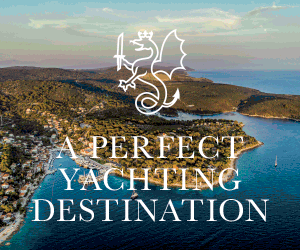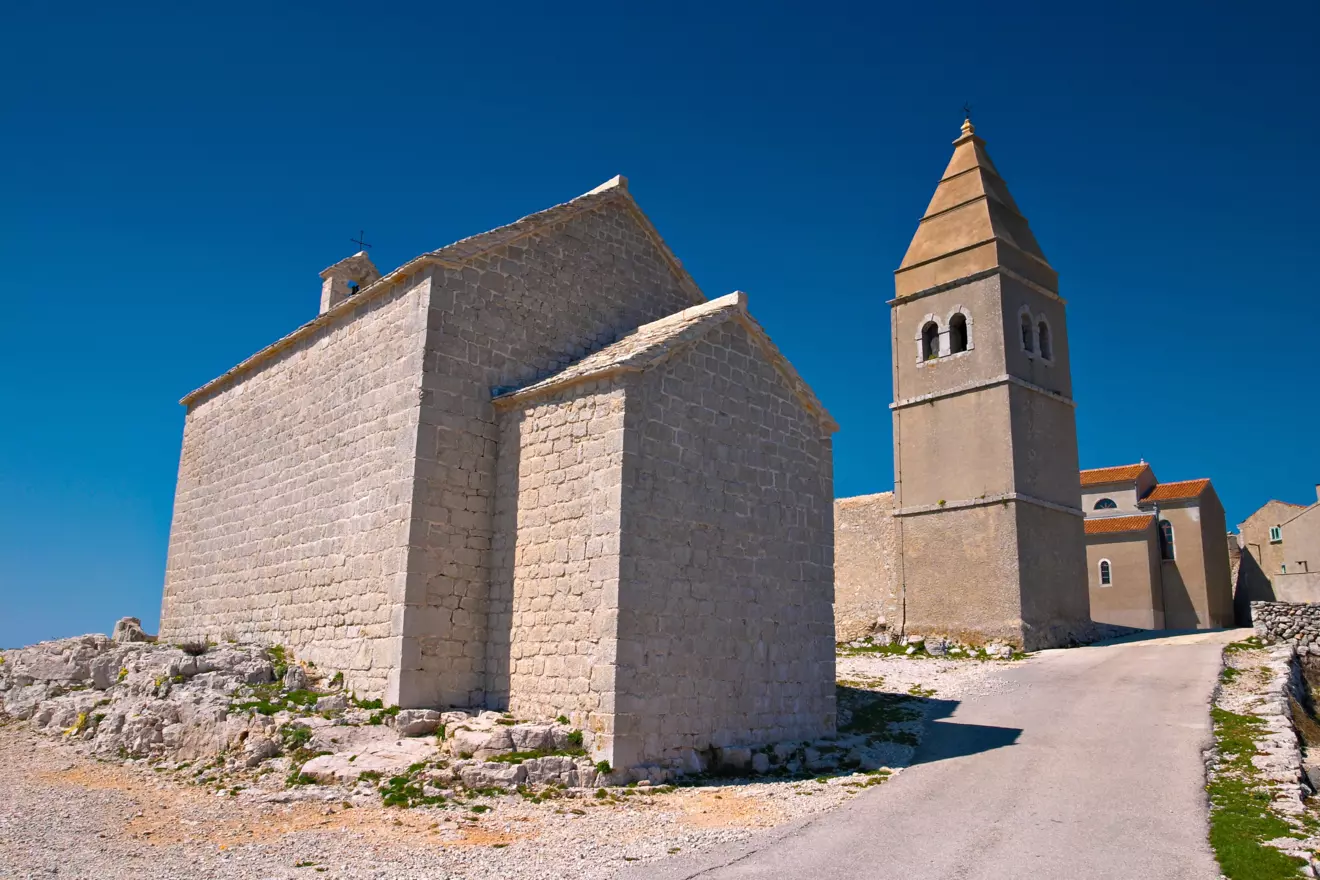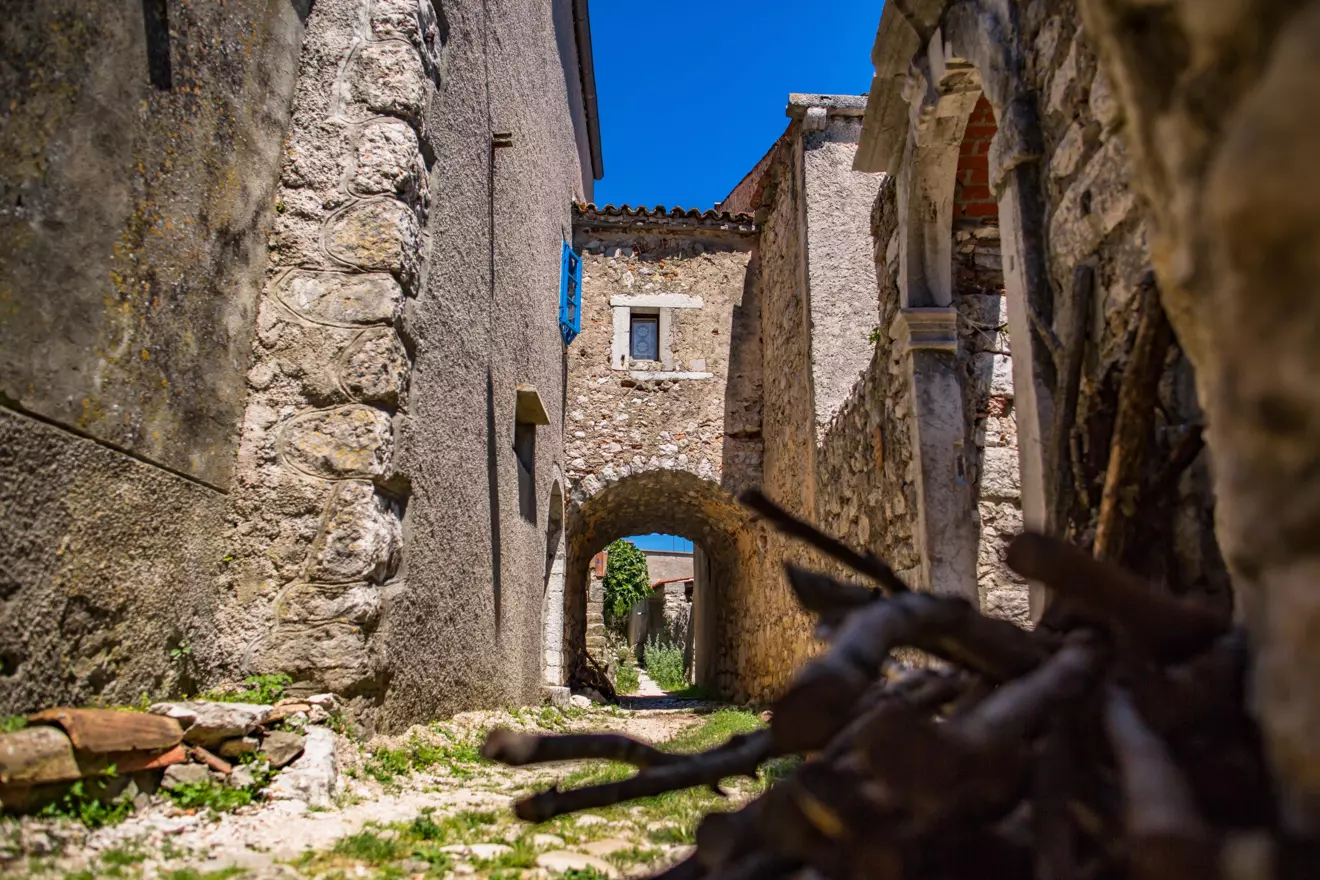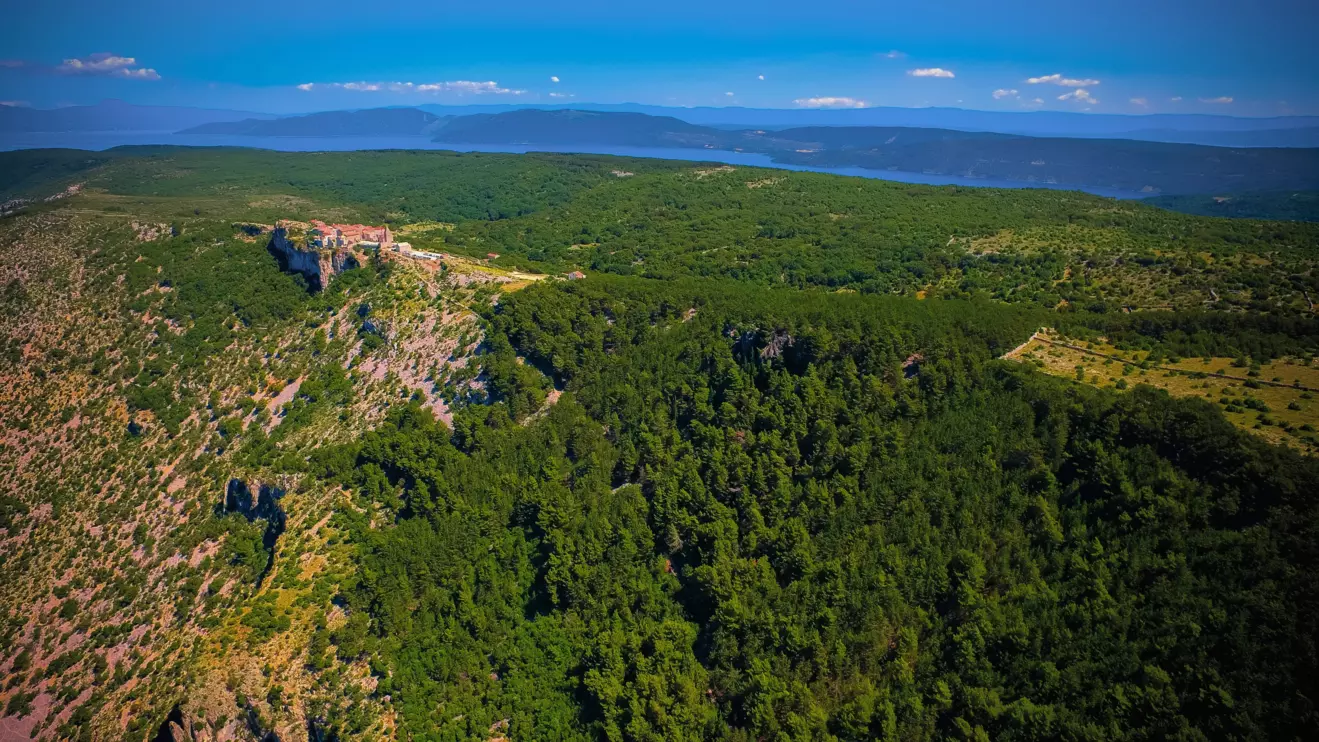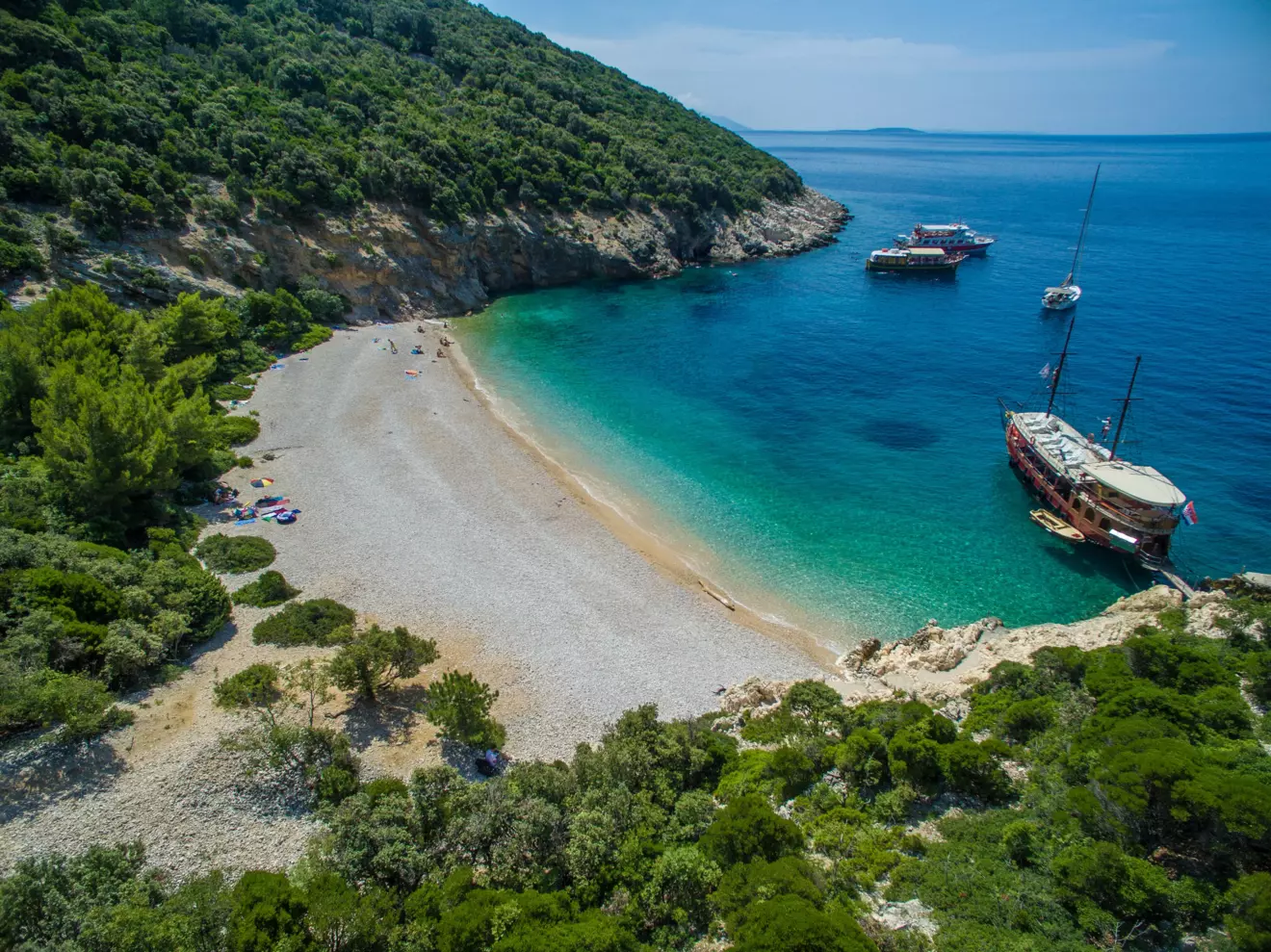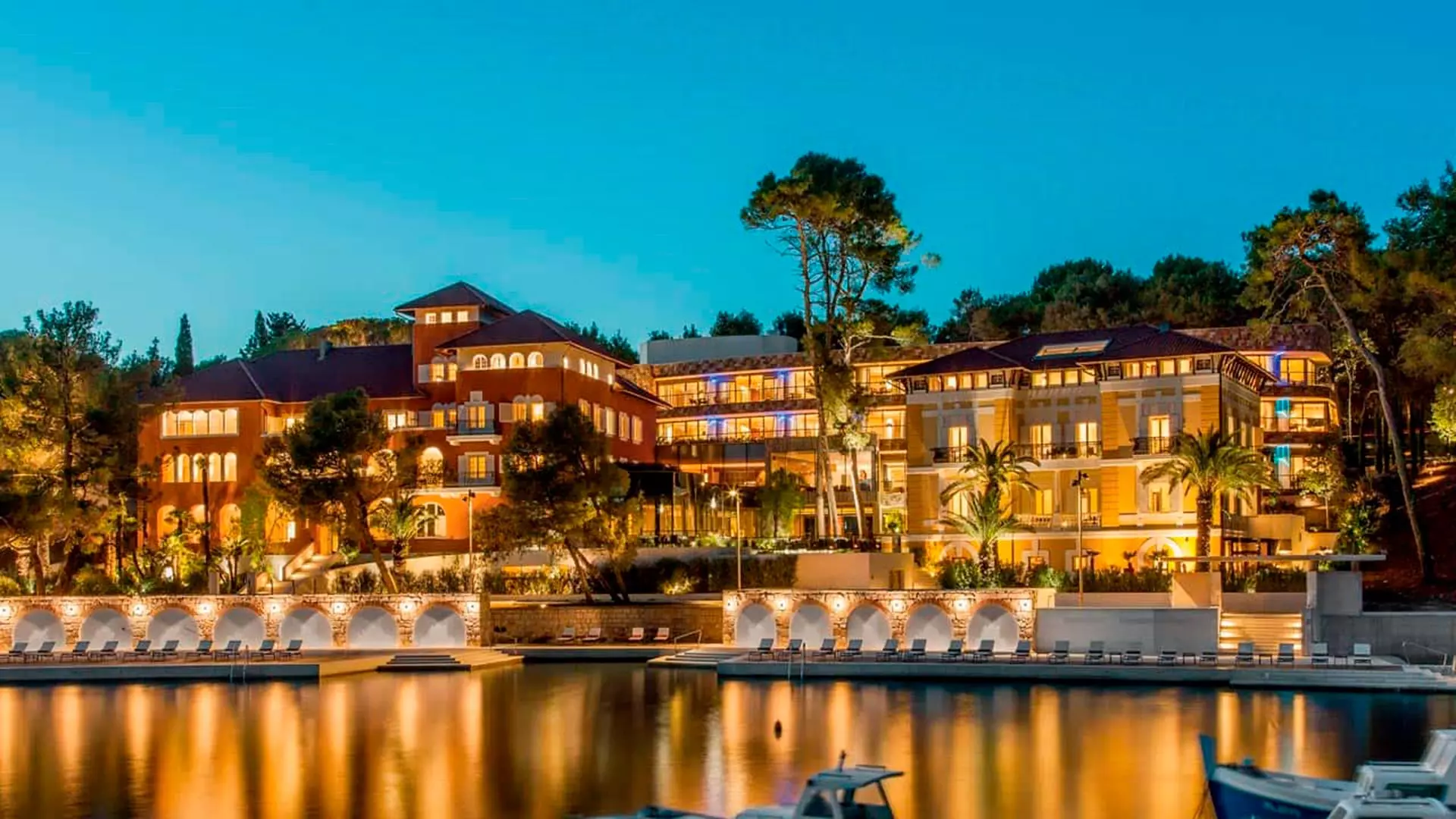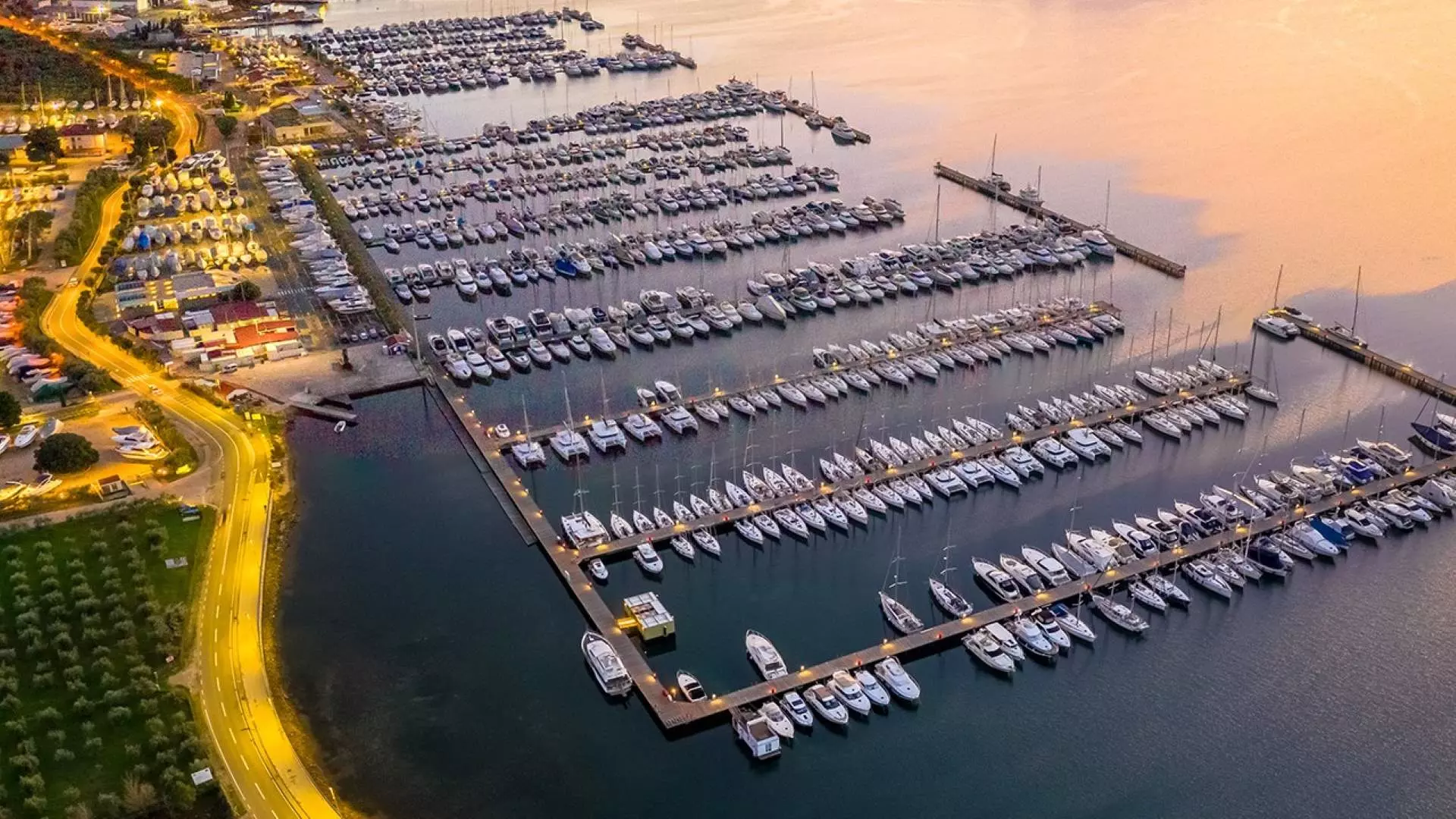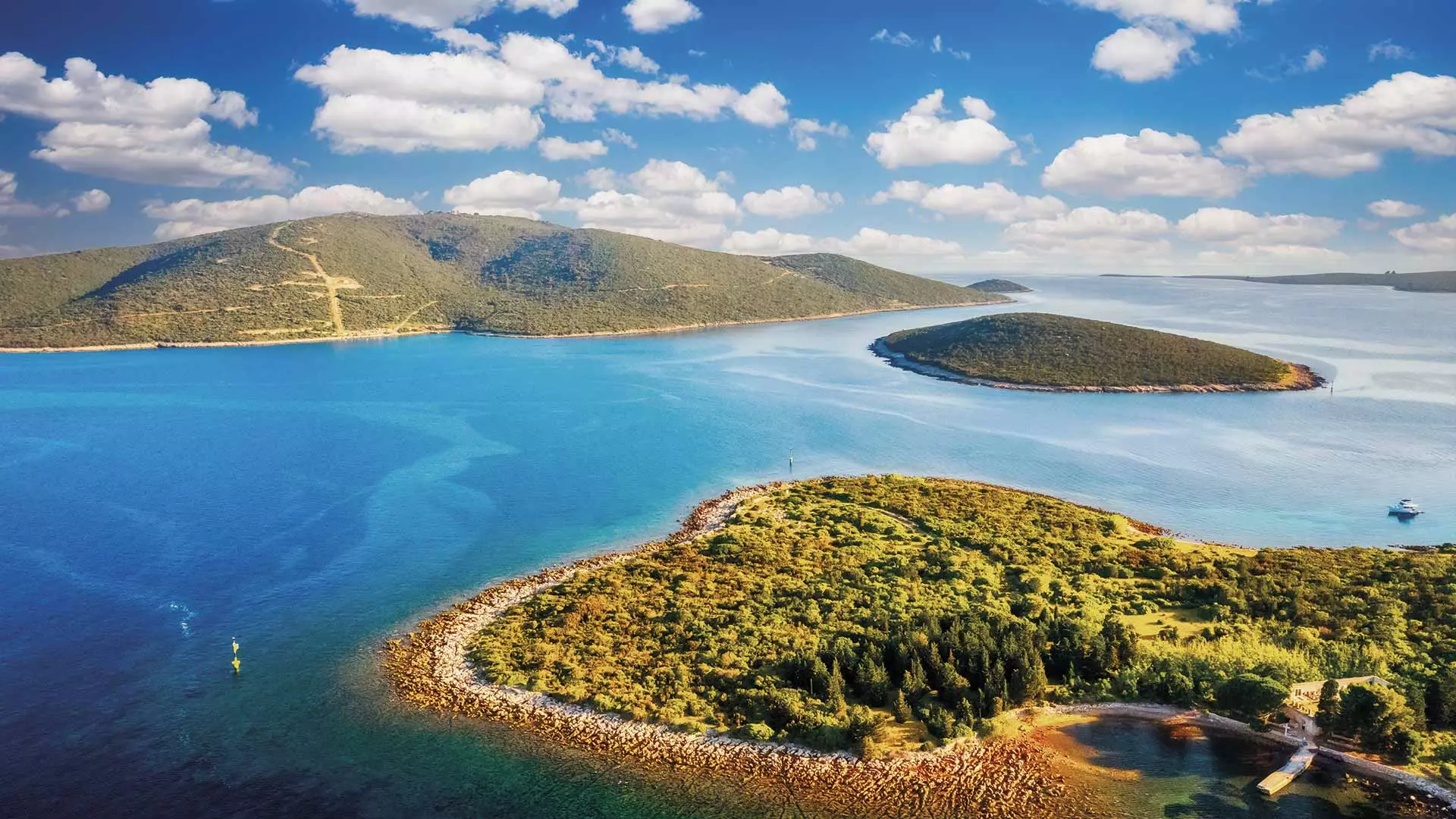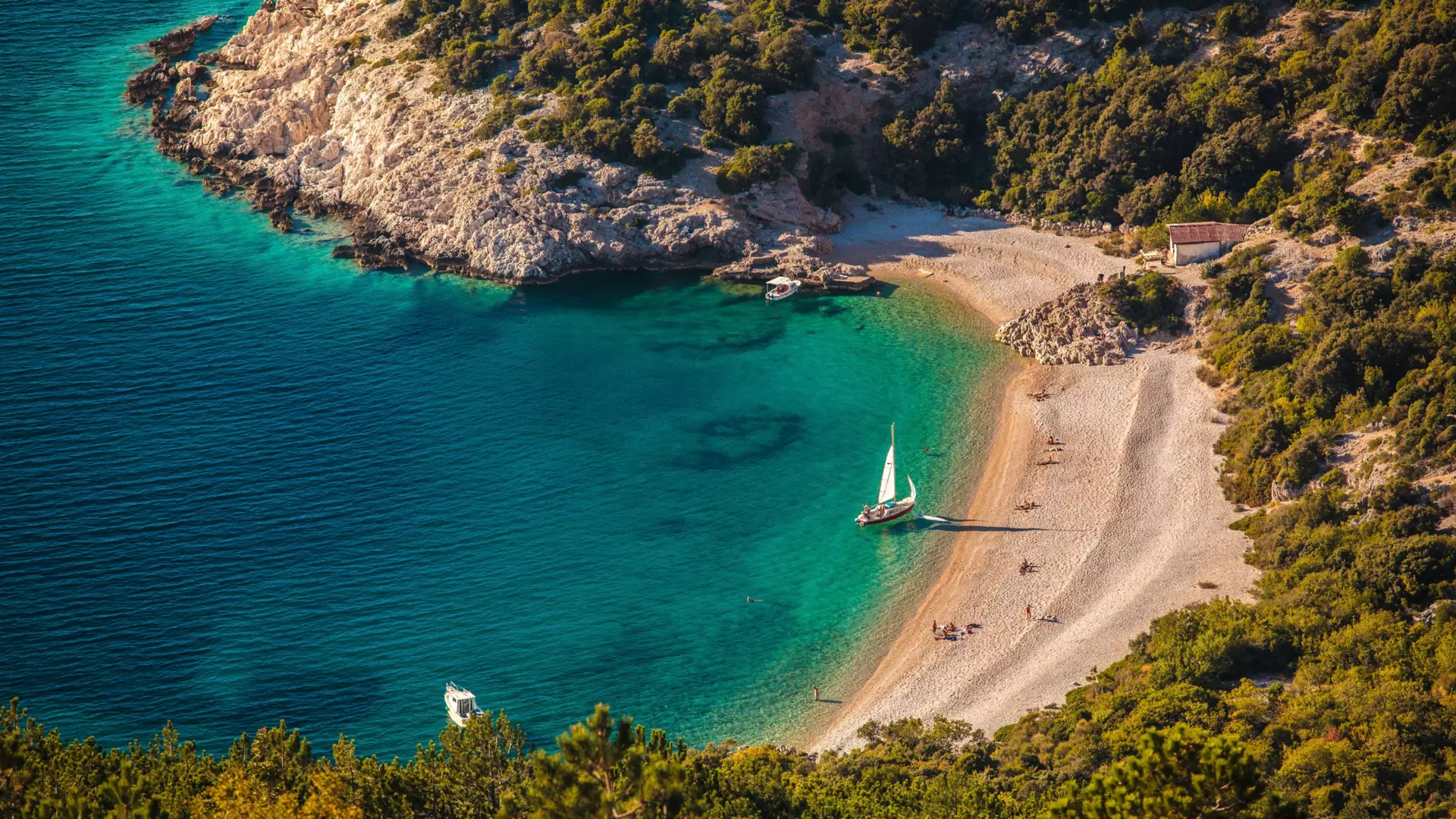
Lubenice: Between the Sky and the Sea
Located on a cliff, this stone village on the Island of Cres boasts one of the most beautiful views of the open sea and the magical Sv. Ivan and Žanja bays that can only be reached on foot or by sea
The village of Lubenice is situated on the west coast of the Island of Cres, 378 meters above sea level. This is one of the island’s oldest settlements, with a history spanning over 4000 years. Lubenice was established on a prehistoric hillfort, later developing into a Roman settlement called Hibernicia – which translates as 'winter' or 'cold' place. Precisely because of its position on a cliff protruding into the sea, Lubenice has played an important defensive and strategic role throughout history, overseeing the waterways of the Kvarner Bay.
At present, Lubenice is a small, nearly abandoned place full of charming authenticity. Narrow stone streets, medieval architecture and as many as five small churches bear witness to a rich history.
In the embrace of the past
A small square welcomes you when you enter, leading to the remains of the walls, the city gate and the 15-century Gothic church of Anthony of the Desert, known for its extraordinary acoustics. Forty-odd close-packed houses are connected by two longitudinal streets and small covered arched passageways, with Renaissance and Baroque details visible on the old medieval foundations.
The remains of an ancient villa rustica and a pier can be seen at the foot of the settlement, while the beautiful, albeit neglected, gardens and olive groves preserve memories of island life as it once was.
The specific character of this settlement as a well-preserved urban-rural complex has earned Lubenice a place on the Tentative List for inscription on the UNESCO World Heritage List.
Paradise coves
One of the most stunning views of the Adriatic can be seen from the viewpoint in the center of Lubenice. Under the steep cliffs, among the rocks, is the St. Ivan beach: wild, difficult to access, but that's what makes it so beautiful. It can only be reached on foot by a path that leads downhill, which takes at least 45 minutes, but the effort is very much worth it. The alternative is arriving by boat, which is the most common choice of boaters who come here for the quiet bay, crystal clear sea and natural shade. It is no coincidence that this beach regularly makes the lists of the most beautiful beaches in Croatia and Europe.
Further down south, Žanja bay is home to Plava Grota. This cave is illuminated by the sun in the late afternoon so that the entire space shimmers in various shades of blue. Swimming is the only way to reach the entrance, making the entire experience even more impressive.
Music in stone
In summer, Lubenice briefly comes to life with the sounds of classical music. The Parish Church of the Blessed Virgin Mary hosts traditional 'Lubenice evenings,’ creating an unforgettable musical experience in a stone setting.
There is also a small Sheep Farming Museum in the village, dedicated to the centuries-old tradition of sheep farming on the island, which is mentioned in the Cres Statute from 1332. Even now, the practice remains one of the most important industries on the island. Due to its adaptability and resilience, the Cres sheep is a symbol of local life – just like Lubenice itself.
Miniature island within the island
Even today, when you can count the number of inhabitants on the fingers of one hand, Lubenice remains a symbol of the island's silence and perseverance. A place where time stands still, and where the sunset, accompanied by the smell of the wind and the sound of music, is better than any postcard.
Text Ida Vickota
Photos Marijana Eršte, Robi Sablić, Ivo Biočina, Aleksandar Gospić, Zoran Jelača


